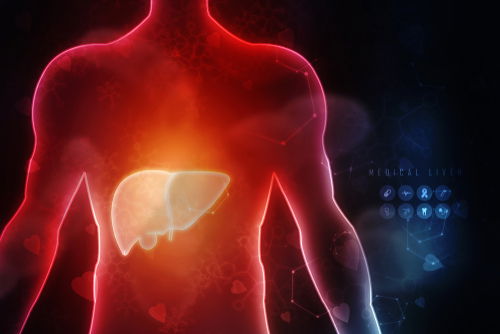PV-1 Gene and Liver Metabolism

Weight-loss plateaus are a common hurdle for individuals reducing their calorie intake. Initially, weight melts away, but as the body adjusts, metabolism slows to conserve energy, which is the body’s natural survival mechanism to prevent starvation. This transition includes a shift in energy use, where the liver typically switches from burning carbohydrates to oxidizing fatty acids for energy.
Scientists at the University of Southern Denmark recently made significant strides in understanding how the liver regulates energy use during fasting, paving the way for potential breakthroughs in weight loss management. Their research focuses on the plasmalemma vesicle-associated protein, or PV-1 gene, that plays a critical role in the body's metabolic response during calorie restriction.
Danish researchers found that when the PV-1 gene was suppressed in mice, this metabolic shift did not occur. Instead, the liver continued to burn carbohydrates, depleting sugar reserves while redirecting fatty acids to muscles rather than storing it in the liver. This altered energy usage had no adverse effects on the mice and improved metabolic efficiency.
NOTE: The University of Southern Denmark’s PLVAP study on metabolism was initially published in the journal Cell Metabolism. The team of research scientists included Daniel Hansen, Jasmin Jensen, Christian Andersen, Peter Jakobsgaard, Jesper Havelund, Line Lauritsen, Samuel Mandacaru, Majken Siersbæk, Oliver Shackleton, Jonathan Brewer, Blagoy Blagoev, Nils Færgeman, and Kim Ravnskjær (all from SDU). Collaborators from Japan, the USA, and Finland. Danish scientists suggest that targeting the PV-1 gene could be key to overcoming common barriers by offering new hope for those with significant weight-loss goals.
How Cells Trigger Metabolic Changes
Historically, the PLVAP gene has been associated with maintaining endothelial cell function, which regulates blood flow, oxygen delivery, nutrient transport, and inflammation. However, SDU’s groundbreaking research has revealed an entirely new role for the PV-1 gene in liver metabolism during fasting by switching from burning sugar to utilizing stored fat (fatty acids) as its energy source. The research revealed that suppressing the PV-1 gene prevents this metabolic adaptation.
This indicates that having the ability to manipulate the PV-1 gene offers new hope for overcoming weight-loss plateaus. By maintaining optimal carbohydrate-burning activity in the liver, individuals may avoid the metabolic slowdown that typically hinders progress. Moreover, this discovery has broader implications, as it could enhance existing weight-loss using receptor agonists based on a decline in metabolic slowdowns.
Combining these revolutionary weight-loss medications with treatments targeting the PLVAP gene, a dual approach to sustaining fat-burning and efficient carbohydrate metabolism could emerge as a game-changer in sustainable weight management. So, redirecting fatty acids to skeletal muscles while keeping the liver processing energy at full speed could create opportunities for long-term improvements in metabolic health and well-being.
Kickstart Your Journey for Weight Control
Targeting the PV-1 gene could lead to the development of new pharmaceuticals or treatment protocols that improve metabolic efficiency. Such advancements could further support individuals struggling with chronic weight-related health issues, making it easier to lose weight and avoid regaining the lost weight. These findings represent a significant step forward, offering new hope for those facing the challenges of weight-loss plateaus and metabolic inefficiency. Maintaining the liver’s ability to burn either source of energy could help combat obesity.
The Danish discoveries surrounding the PLVAP gene emphasizes the importance of further research and development to combat obesity and weight-related health conditions. By further exploring such innovative approaches, the science of weight-loss moves a step closer to achieving long-term solutions that empower individuals to maintain healthy lifestyles after confidently overcoming frustrating metabolic challenges. Combined with a receptor agonists, the PV-1 gene may help bridge the gaps in existing weight management therapies.
At the Metabolic Research Center, our experienced teams have been helping people apply the science of weight loss to their journey as a sustainable approach to long-term weight management. Contact us today at the medical weight loss clinic Branson to see how our experienced team can help you. All it takes is a quick email or call to learn more about MRC’s science-based weight loss plans. And, don’t’ forget to schedule a free consultation as your first step toward improving your metabolism for a lifetime of health living.
By submitting this form, you agree to receive marketing text messages from us at the number provided, including messages sent by autodialer. Consent is not a condition of any purchase. Message and data rates may apply. Message frequency varies. Reply HELP for help or STOP to cancel. View our Privacy Policy and Terms of Service.

